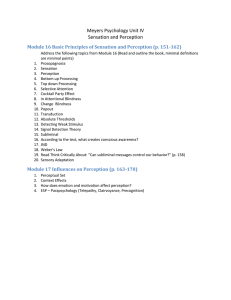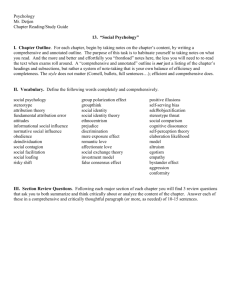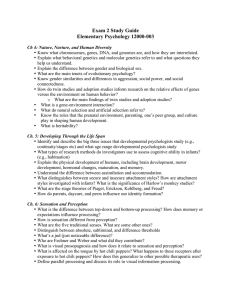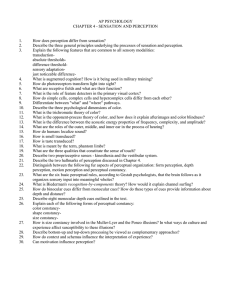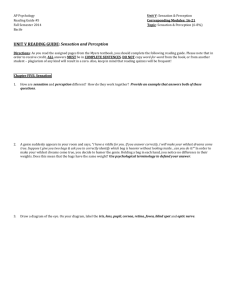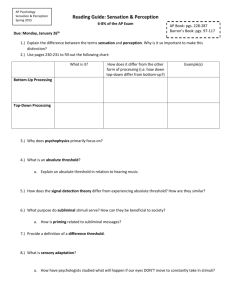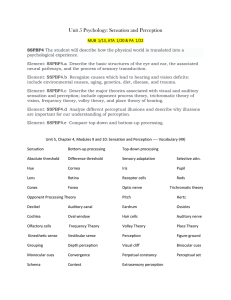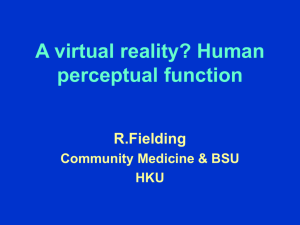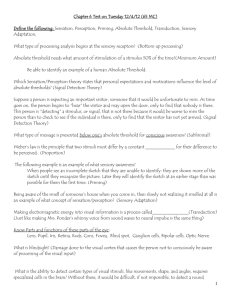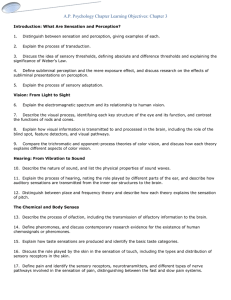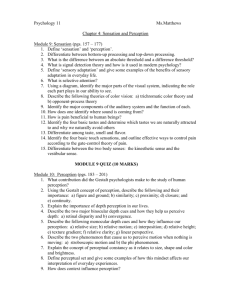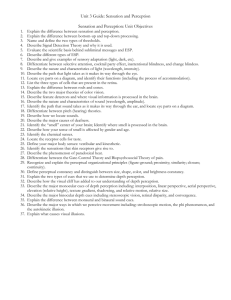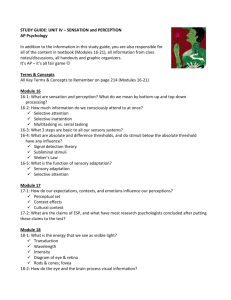Psychology Mr. Detjen Chapter Reading/Study Guide 4. “Sensation
advertisement
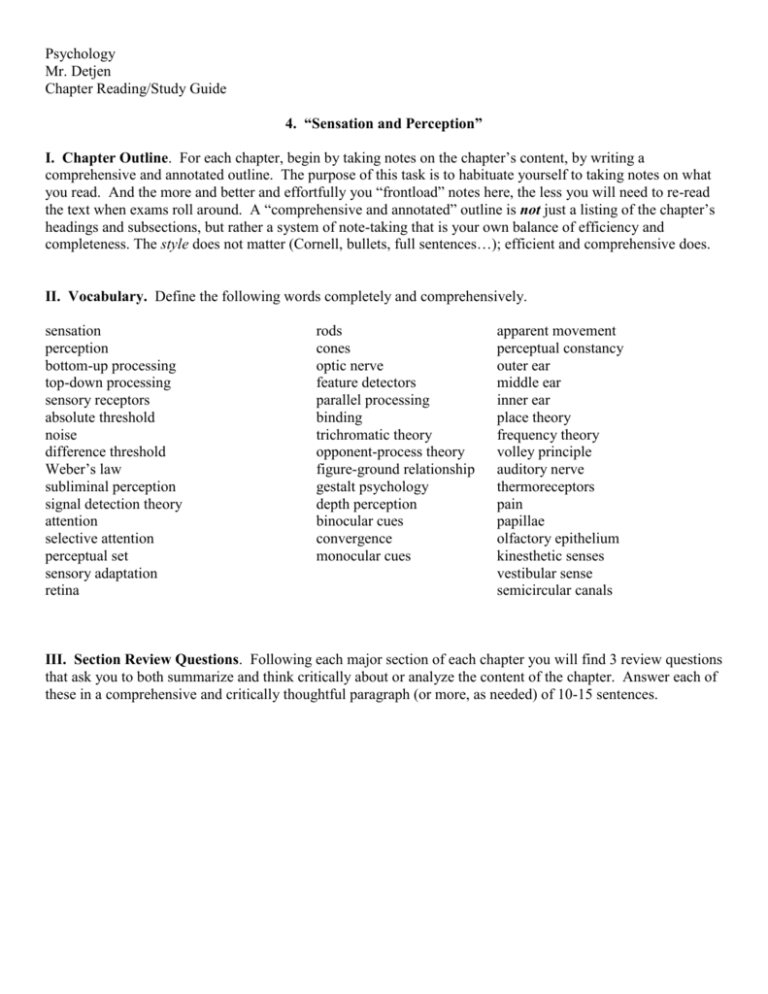
Psychology Mr. Detjen Chapter Reading/Study Guide 4. “Sensation and Perception” I. Chapter Outline. For each chapter, begin by taking notes on the chapter’s content, by writing a comprehensive and annotated outline. The purpose of this task is to habituate yourself to taking notes on what you read. And the more and better and effortfully you “frontload” notes here, the less you will need to re-read the text when exams roll around. A “comprehensive and annotated” outline is not just a listing of the chapter’s headings and subsections, but rather a system of note-taking that is your own balance of efficiency and completeness. The style does not matter (Cornell, bullets, full sentences…); efficient and comprehensive does. II. Vocabulary. Define the following words completely and comprehensively. sensation perception bottom-up processing top-down processing sensory receptors absolute threshold noise difference threshold Weber’s law subliminal perception signal detection theory attention selective attention perceptual set sensory adaptation retina rods cones optic nerve feature detectors parallel processing binding trichromatic theory opponent-process theory figure-ground relationship gestalt psychology depth perception binocular cues convergence monocular cues apparent movement perceptual constancy outer ear middle ear inner ear place theory frequency theory volley principle auditory nerve thermoreceptors pain papillae olfactory epithelium kinesthetic senses vestibular sense semicircular canals III. Section Review Questions. Following each major section of each chapter you will find 3 review questions that ask you to both summarize and think critically about or analyze the content of the chapter. Answer each of these in a comprehensive and critically thoughtful paragraph (or more, as needed) of 10-15 sentences.


